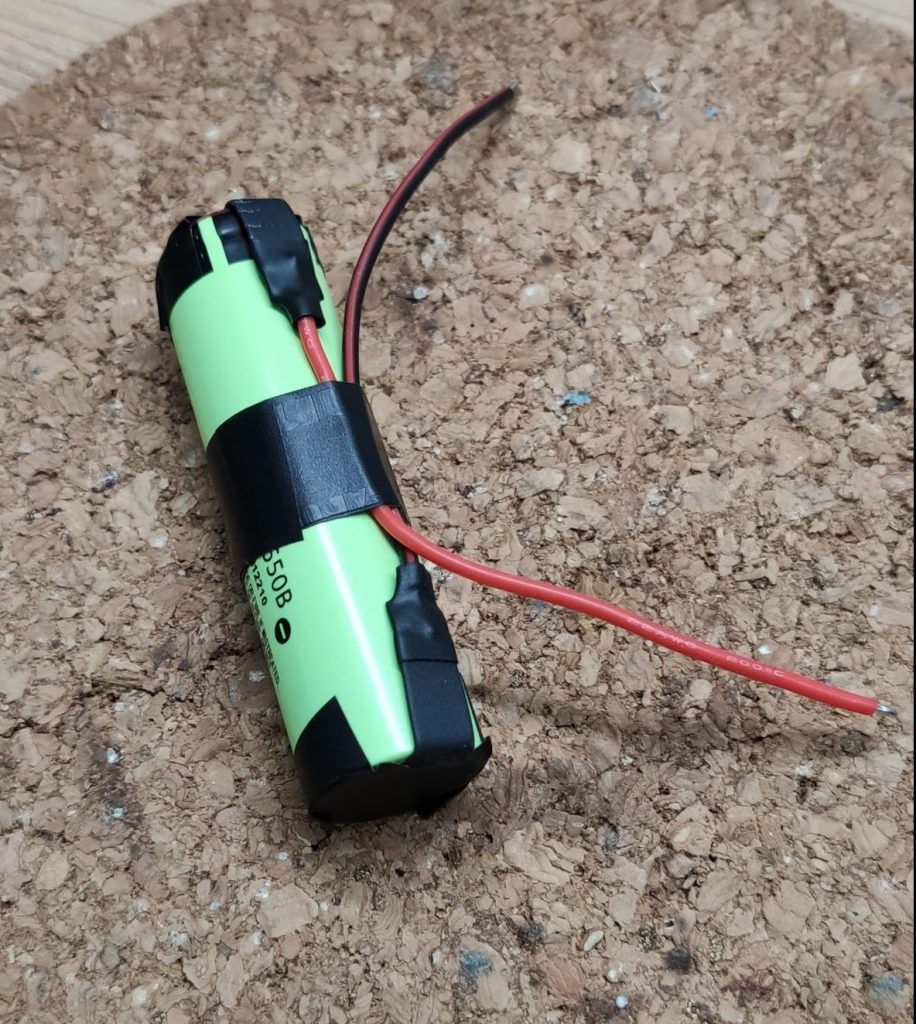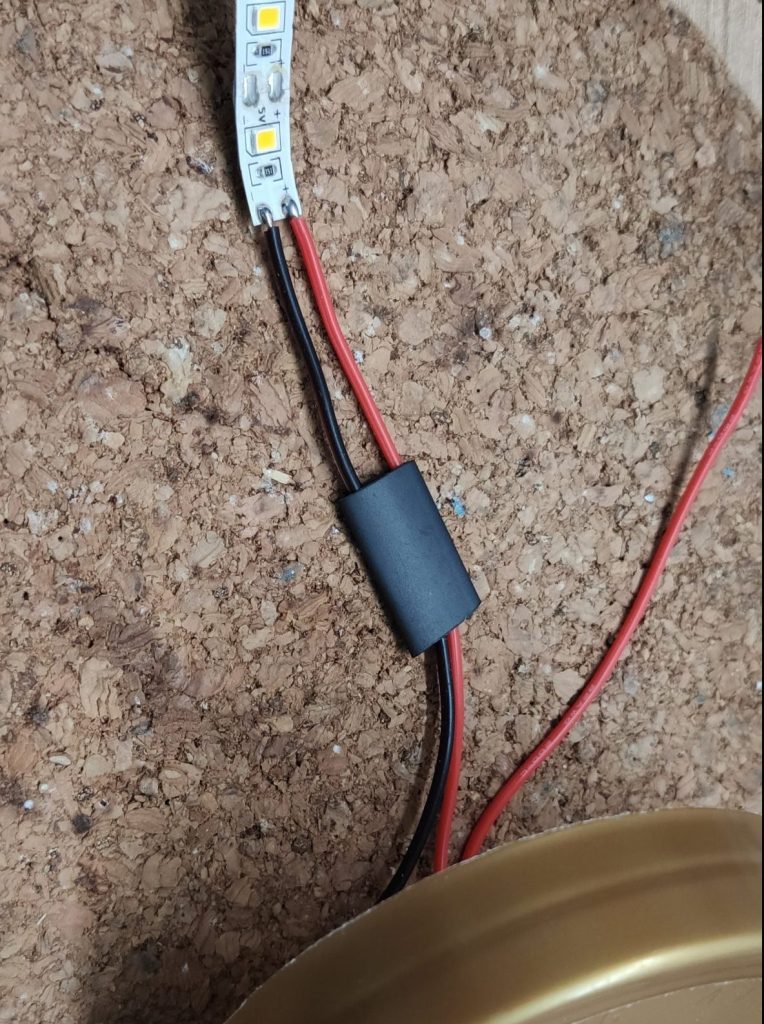Couple months ago my kids ask me to build something with them. So I started to think about a small project that is simple and teach them something about electricity and tinkering. I ended up with a rechargeable lamp based on a marmalade jar. As I posted the results on twitter I got some feedback and PM’s on how we built it and what components were used. This article is a complete walk trough of this project including an updated component list.

Parts list
For this project we will use the following components
- Some cheap 5V led strip
- A USB-C type charging unit
- A rechargeable Li-ion battery
- A regular button (not a momentary one)
- Some wire
- Some heat shrink
- isolating tape
- A marmalade or honey jar
*Some links are affiliate links. If you use them to buy the parts for your project you will help me and my next project. These links will cause no extra fee or costs to you

Time to teach the kids how to solder
Lets start with the battery. I use 3400mAh Li-ion battery with a voltage of 3.7V. This fits perfect to the charging unit and also lights up the cheap led strip pretty well. This battery comes with already soldered metal tabs, which makes wire soldering much easier. Take some wire and solder it to tabs. Keep an eye on the polarity and the cable colors. Is used red for positive / VCC and black for negative / GND.

Next, secure the connections and the sides of the battery with electrical tape to prevent shorts.

Now grab the charging unit and presolder the pads on non USB-C side. The inner pads are for the battery the outer pads are for the load / the led strip in our case.

After presoldering the pad grab the battery and solder the wires to the inner pads. Double check the polarity and the markings on the board. The positive side is marked with B+ and the negative with B-

You can now test the charging unit by hooking up an USB-C cable. If it’s in charging mode you will see a red led light up. The battery is fully charged if the blue led will light up. In case you see both leds come up and one of them starts to flicker heavy, you might have a problem with you connection to the battery.

Bring up the lights
Before we connect the charging unit to the led strip we have to prepare the wires and the jar lid. First drill a hole into the lid of the jar where the button fits in. I used a conical metal drill bit to find out the perfect size, but any large metal drill should work.

Now take a piece of wire and separate the black and the read wire. Then cut the red in half and presolder all ends.

After that solder the to read cables to the button and put it into the lid of the jar. To secure the soldering joints and preventing shorts apply some small heat shrink to the button.

Grab now the led strip and the black wire and solder it onto the negative pad on the led strip. Take then the jar lid and solder one red cables to the positive pad on the led strip. As well as on the button secure the soldering joint with a heat shrink

The two wires left over can now be soldered to load pads of the charging unit. Simply red to red and black to black. That completes the circuit and the marmalade lamp is ready for a first bench test. So press the button in the lid and the led strip should light up. If you want, you can wrap the charging unit in some kapton or electrical tape for more security.

Last not least, put everything into the jar, screw on the lid and you’re done 🥳.

Some Mesurements
To teach the kids more about current you can calculate approx the life time and the charing time of the by measuring the current which is use by the led strip and which is provided from the charging unit during the charging process.

With a usage of 166mA on 3400mAh battery the strip should light about ~20h. The charging unit provides about 630mA. This results in a charging time of round about ~5h.

Sum up
That was fun! Hope you enjoyed this project as much as me and my kids did. You could modify this project a bit to make it more secure for younger children, e.g. you could replace the marmalade jar with transparent plastic box from the dollar store. You can also let the kids more customize it. e.g. they could glue some colored transparent paper or sticker on it.
If you like this project, feel free to share the article or an image of the DIY marmalade lamp you built 😉